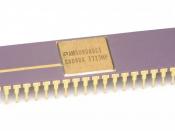This paper will discuss a business dispute between Intel and AMD brought through the hurt of consumers by illegally coercing computer makers to use the chips. It will identify the legal issue in dispute as well as the legal process that was used to resolve the issue, and how that process fits into the court structure. Then it will explain the civil and criminal aspects of the dispute. The paper will then compare and contrast possible outcomes if the dispute could be heard in both a criminal and a civil case, while addressing the differences between these types of actions.
"New York Attorney General Andrew Cuomo has served Intel and AMD with demands for information he'll use as he tries to show that Intel stifled competition and hurt consumers" (BusinessWeek, 2008). Coumo alleged that Intel shut out AMD through "rebates, punitive pricing, and exclusive contracts" (BusinessWeek, 2008). This action taking place adds to Intel's problems as they also face antitrust inquiries in a private lawsuit brought by AMD in U.S.
federal courts since 2005. Not yet made formal, Intel is also being investigated for their anticompetitive behavior.
A different individual specializing in antitrust and commercial litigation believes "predatory pricing and exclusive dealing are a tough case under U.S. law" (BusinessWeek, 2008). Intel will only be susceptible to these charges if opponents can prove that predatory pricing was manipulated in a way that pushed AMD out of the market; however, AMD continues to be in the market. When AMD captured the market, Intel "improved its technology [to] recover shares" unlawfully in that "U.S. antitrust laws permits a company to hold an outsize share of the market [as] long as it doesn't use power to limit competition" (BusinessWeek, 2008). According the U.S. court of appeals, "intentional deception of a private standard-setting organization,


